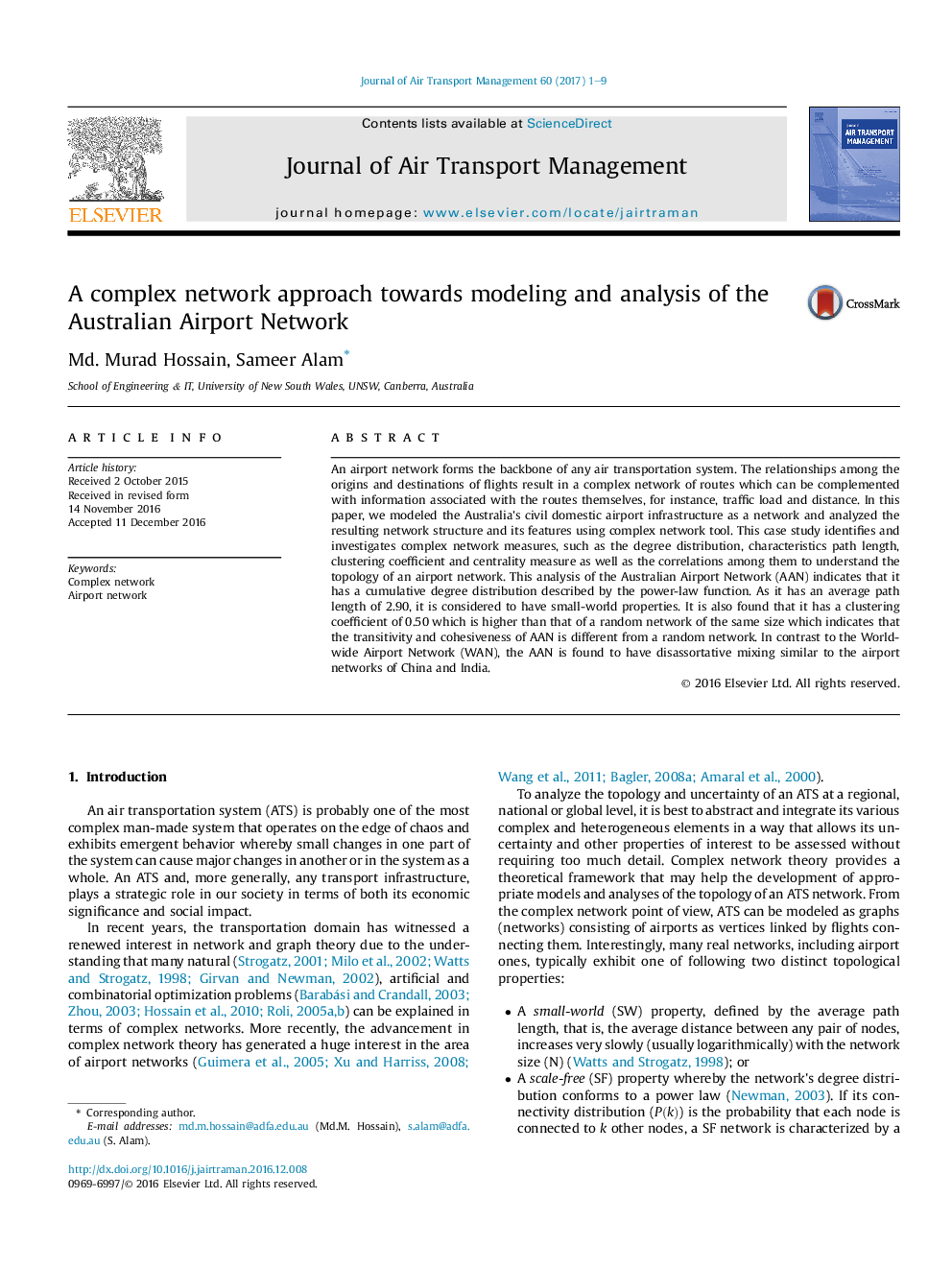| Article ID | Journal | Published Year | Pages | File Type |
|---|---|---|---|---|
| 5111543 | Journal of Air Transport Management | 2017 | 9 Pages |
Abstract
An airport network forms the backbone of any air transportation system. The relationships among the origins and destinations of flights result in a complex network of routes which can be complemented with information associated with the routes themselves, for instance, traffic load and distance. In this paper, we modeled the Australia's civil domestic airport infrastructure as a network and analyzed the resulting network structure and its features using complex network tool. This case study identifies and investigates complex network measures, such as the degree distribution, characteristics path length, clustering coefficient and centrality measure as well as the correlations among them to understand the topology of an airport network. This analysis of the Australian Airport Network (AAN) indicates that it has a cumulative degree distribution described by the power-law function. As it has an average path length of 2.90, it is considered to have small-world properties. It is also found that it has a clustering coefficient of 0.50 which is higher than that of a random network of the same size which indicates that the transitivity and cohesiveness of AAN is different from a random network. In contrast to the World-wide Airport Network (WAN), the AAN is found to have disassortative mixing similar to the airport networks of China and India.
Keywords
Related Topics
Social Sciences and Humanities
Business, Management and Accounting
Strategy and Management
Authors
Md. Murad Hossain, Sameer Alam,
